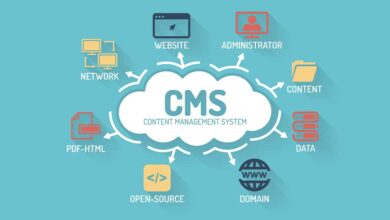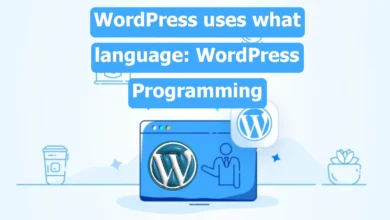What is SEO? SEO for Website SEO for YouTube + 2025 Update

“What is SEO“? is a frequently asked question in the world of online businesses. Suppose you are a website developer, digital marketing expert, or even a regular web user. In that case, you have probably come across the term SEO and have always wondered what SEO is and what it does? Answering this question may be possible in one sentence. Still, to understand it deeply, you need to be familiar with the details and numerous SEO techniques. In this article from Follow Technologies, in addition to answering the important question, you will learn key points to become familiar with and professional in the world of SEO and website optimization.
In today’s world, the Internet serves as a vast repository of information, products, and services. In this big world, visibility has become a constant competition, as the sources of information available to users are increasing every day.
In this vast online world, where billions of web pages are screaming for attention, how can you stand out from the competition and, in other words, rise above the digital noise? How can websites rank better on search results pages and attract more visitors? The answer to these questions lies at the intersection of technology, strategy, and art. It is encapsulated in a simple yet powerful acronym: SEO, or search engine optimization.
What is SEO?
SEO, or Search Engine Optimization, is a set of technical and content planning, strategies, and processes that cause website pages to rank higher in search engine results pages. Achieving and maintaining these top rankings requires constant effort because your competitors are also striving for these rankings. So, optimizing your website for search engines is an ongoing process.
When you navigate the vast world of the Internet, looking for information, products, or services, you undoubtedly rely on search engines like Google to guide you in the right direction. Search engines have become the modern compass, guiding us through the maze of websites and online content. However, have you ever wondered how some websites appear at the top of search results while others are buried in lower rankings and pages? The answer lies in the realm of search engine optimization, or SEO.
SEO Definition and Basics
At its core, SEO is a multifaceted discipline that includes optimizing various aspects of a website to improve its visibility on the search engine results page (SERP). The primary goal of SEO is to increase organic (non-paid) traffic to a website, and it achieves this through a combination of strategies and techniques.
The basic principles of SEO are:
1. Semantic relationship between content and purpose
Search engines strive to provide users with the most relevant results for their queries. SEO ensures that a website’s content matches the search intent of its audience.
2. Crawlability
Search engines send out automated robots, known as crawlers, to crawl the web and index web pages. With technical optimization, you ensure that these robots can easily access and index your site’s content.
3. User Experience
SEO is not just about search engines. It also involves creating a better experience for website visitors. Some of these include fast loading, mobile compatibility, and easy navigation.
4. Quality content
Content is king in the world of SEO. High-quality, informative, and engaging content not only attracts visitors but also earns backlinks and increases search rankings.
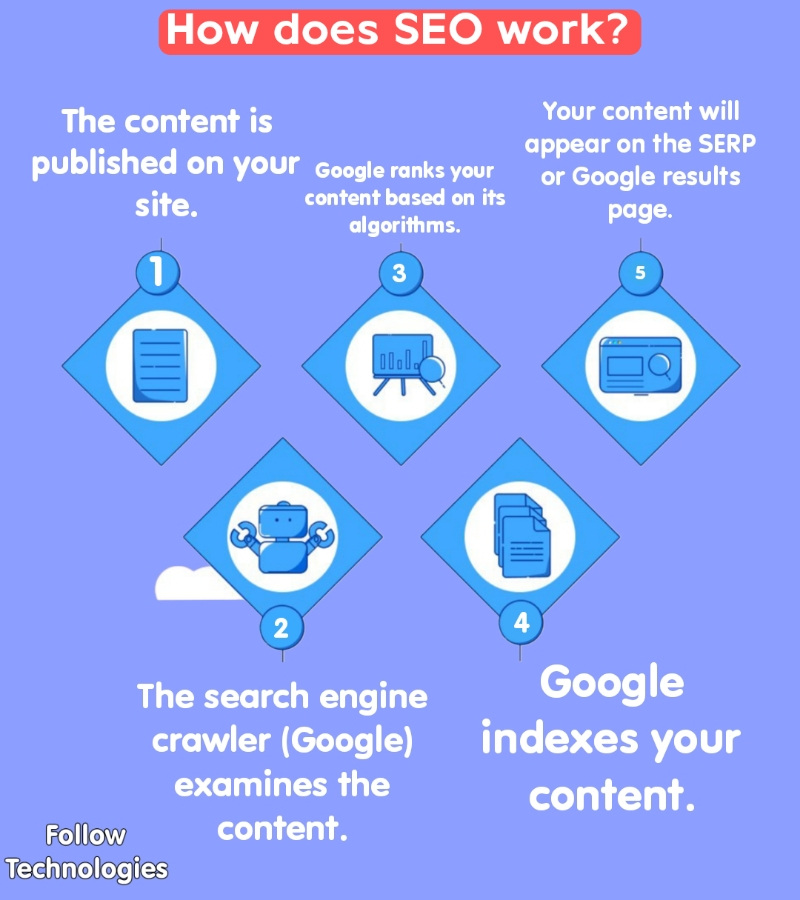
Historical evolution of search engines
To truly understand the importance of SEO, we need to know how search engines have evolved over the years. The story of search engines dates back to the early days of the Internet when pioneers like Archie and Gopher indexed files and directories. However, the launch of Google in 1998 marked a pivotal moment in search history.
Google’s innovative PageRank SEO algorithm revolutionized the way search engines rank web pages. Instead of relying solely on keyword matching, PageRank took into account the number and quality of links pointing to a page, providing more accurate and relevant results.
Since then, search engines have continued to evolve. They have become smarter, more intuitive, and able to understand natural language queries. This evolution has made SEO an ever-changing practice where it is essential to stay up-to-date with search engine algorithms.
The role of keywords in SEO
Keywords are the building blocks of SEO. They are the words and phrases that users enter into search engines when searching for information. Proper keyword research is the cornerstone of a successful SEO strategy. This process involves identifying the keywords and phrases that are most relevant to your content and target audience.
Once you have identified these keywords, they should be strategically integrated into various elements of your website, especially content SEO, including:
1. Title
The title of a web page is a vital element for search engines to understand the topic and its relevance.
2. Meta Description
These short summaries appear in search results and can affect click-through rates.
3. Header tags
Proper use of header tags (H1, H2, H3, etc.) helps structure content and indicates the importance of different sections.
4. Body of content
Naturally, including keywords in your content is essential to better connect with your audience. Still, avoid overusing keywords, as they can have a negative impact.
5. Page addresses
Proper URLs that contain keywords help users and search engines understand the content of the page.
6. Image Alt Text
Alt text is a text description for images that improves accessibility and, when used with relevant keywords, helps with SEO.

The impact of SEO on website traffic and customers
In today’s digital world, where the Internet is the primary source of information and commerce, search engine optimization (SEO) plays a crucial role in determining a website’s fate. In this section, we’ll explore how SEO can make your online presence look much more professional, increase user engagement, and even improve conversions.
1. Increase website traffic
SEO generally aims to improve a website’s visibility in search engine results pages (SERPs). When users search for information or products online, they usually click on one of the top results. This is where SEO comes in. By SEOing your website’s content, structure, and performance, you can climb search engine rankings. So what’s the ultimate goal? Achieving a favorable ranking on the first page of results.
2. The importance of content SEO
High-quality, relevant content is the lifeblood of SEO. Search engines like Google have become very adept at understanding user intent. As a result, by producing content that matches the user’s search intent and motivation, you not only attract organic traffic but also increase the credibility of your online business.
3. Conversion rates and user engagement
Increasing website traffic is undoubtedly an important achievement, but it will only be one part of the SEO success equation. User engagement and conversion rates are equally important metrics. Suppose you attract thousands of visitors, but they quickly leave your site and take no action. This is where the impact of SEO combined with engaging content shows itself.
4. User Experience Factor
User experience (UX) is a key component of SEO. When your website is easy to navigate, loads quickly, and provides valuable information, users are more likely to stay on it. As a result, they will open more pages and take the desired actions (make a purchase, sign up for a newsletter, or even fill out a form, etc.).
Types of SEO; 3 methods of website optimization
There are three main strategies for categorizing SEO types: on-page SEO, off-page SEO, and technical SEO.
What is On-Page SEO?
Optimizing the internal structure of a website itself, such as content, code, and structure, is called on-page SEO. Some on-page SEO techniques include:
- Improve website loading speed
- Ensuring website compatibility for mobile
- Optimize title tags and meta descriptions
- Use relevant keywords throughout the content.
- Producing high-quality content that is informative and engaging.
Next, we will examine On-Page SEO techniques in more detail:
1. Keyword research
The first step to on-page SEO is to conduct keyword research to identify the keywords people use to search for your products or services. You can use keyword research tools to help you with this. You’ll learn about some of these tools at the end of this article, but the best tool is Google itself. Search Google for terms related to your business. Then, select Google’s suggestions and competitors’ keywords to get started.
2. Content production
Once you have identified your target keywords, you need to produce and publish content related to those keywords. Your content should be informative, engaging, and well-written.
3. Optimize title tags and meta descriptions
Title tags and meta descriptions are the first things people see when they search for a keyword on Google. Make sure your title tags (titles and headings) and meta descriptions are relevant to your keywords and accurately describe the content of your page.
4. Internal linking
Internal linking is the process of linking from one page on your website to another. Internal linking helps Google understand the structure of your website and the relationships between different pages.
5. Image optimization
Images can be a great way to add visual interest to your website and improve your SEO. When optimizing images, make sure to include relevant keywords in the alt text and file names.
6. Mobile-friendly design
Today, most users browse the web on their mobile devices. Make sure your website design is mobile-friendly and can be easily viewed and navigated on mobile devices.
7. Fast loading speed
Slow loading speeds can deter visitors from staying on your website. Optimize your code and images to ensure your website loads quickly.

What is Off-Page SEO?
This type of SEO is the process of improving a website’s backlink profile (the complete structure of links from other websites). This strategy analyzes and enhances the number and quality of links coming to your website from other websites. Off-page SEO techniques include:
- Guest blogging on other websites
- Activity on social networks and online forums
- Building backlinks from high-quality websites or writing reports
Off-page SEO is a more complex and time-consuming process than on-page SEO. However, it can be very effective in improving your website’s ranking in search results. In the link-building section, we discussed in detail the most important techniques of this type of SEO.
What is technical SEO?
As the name suggests, technical SEO focuses on the site’s structure and foundation. This type of website SEO targets optimizing the site structure so that it is readable for search engines and crawlers and that crawlers can better understand the site. In technical SEO, you need to work on the user experience, loading speed, code and structure, and finally, the site’s architecture. Without performing technical SEO techniques, you cannot achieve top rankings in search results with internal and external SEO.
In addition to search engines, technical SEO has a huge impact on user experience. Suppose you have worked on internal and external SEO completely, and everything is done in the best possible way. But the loading speed of your site is slow. (You should fix this in the technical SEO section.) When a user first enters the site, when your site takes a long time to load, users will leave the site and go to a faster and more elegant site, regardless of your optimized content. Therefore, the technical section is an important piece of the SEO puzzle, the implementation of which techniques completes the complex SEO puzzle and leads to better results in SERP results.
Important technical SEO techniques include the following:
- Site speed optimization
- Site structure and URL optimization
- Finding and fixing duplicate content
- Optimized website design for mobile and desktop
- Optimize code and file sizes for fast-loading
- Using Search Console for Indexing
- Create a clear and concise XML sitemap
Link building; creating digital paths
Link building is the process of obtaining links from other websites to your website and internal linking within your website. It is a fundamental part of SEO, as search engines use links to crawl and index websites and determine their relevance to search terms.
In link building, there are two main types of links:
- Inbound links: These are links from other websites to your website.
- Outbound links: These are links from your website to other websites.
Inbound links are more important for SEO than outbound links because inbound links are seen as a vote of confidence from other websites and help improve your website’s authority and ranking in search results.
White hat and black hat link-building
There are two main types of link-building techniques: white hat and black hat.
1. White Hat Link Building: It is a set of techniques that are used to create correct and natural links. These techniques include:
- Activity on social networks and online forums
- Produce high-quality content that others link to
- Guest writing on relevant websites and linking to your own website
2. Black Hat Link Building: This is a set of techniques that are considered unethical and ineffective. These techniques include:
- Participate in link exchange
- Buying links from other websites
- Using spammy or irrelevant links
Black hat link building may help improve your site’s ranking to some extent, but due to SEO rules, it always runs the risk of being penalized by Google. So, always look for healthy links to your site.
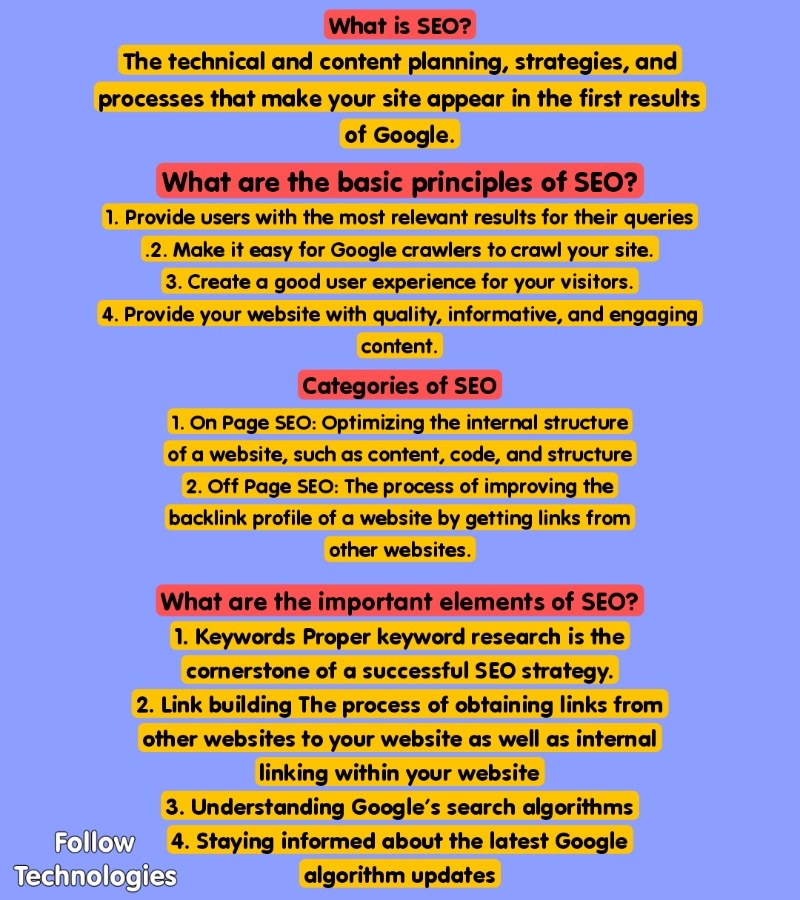
Successful link-building strategies
As we mentioned, proper link building, which is part of a white hat SEO strategy, helps a website rank well. Below, you will read more details about these strategies.
1. Producing high-quality content
This is the most important link-building strategy. If you produce informative, useful, and engaging content, other websites will link to it. Unfortunately, this strategy may not be effective on the Persian web, where copyright is not properly respected and linking to sources is not common. In any case, professional content, even if it does not help get links, attracts loyal users and increases time spent on the website.
2. Guest blogging on relevant websites
Guest blogging is a great way to get backlinks from other websites. When you become a guest writer for a blog, make sure to write quality content relevant to the blog in question. On the Persian web, this has also been replaced by publishing reports or content on free blogging services.
3. Activity on social networks and online forums
Social media and online communities are great places to connect with other people and build relationships. When you are active in these communities, be sure to share your content and promote your website. When implemented correctly, social media can not only help you get quality links but also build brand awareness and improve your marketing strategy.
By following these strategies, you can build a strong backlink profile that will help improve your website’s ranking in search results.
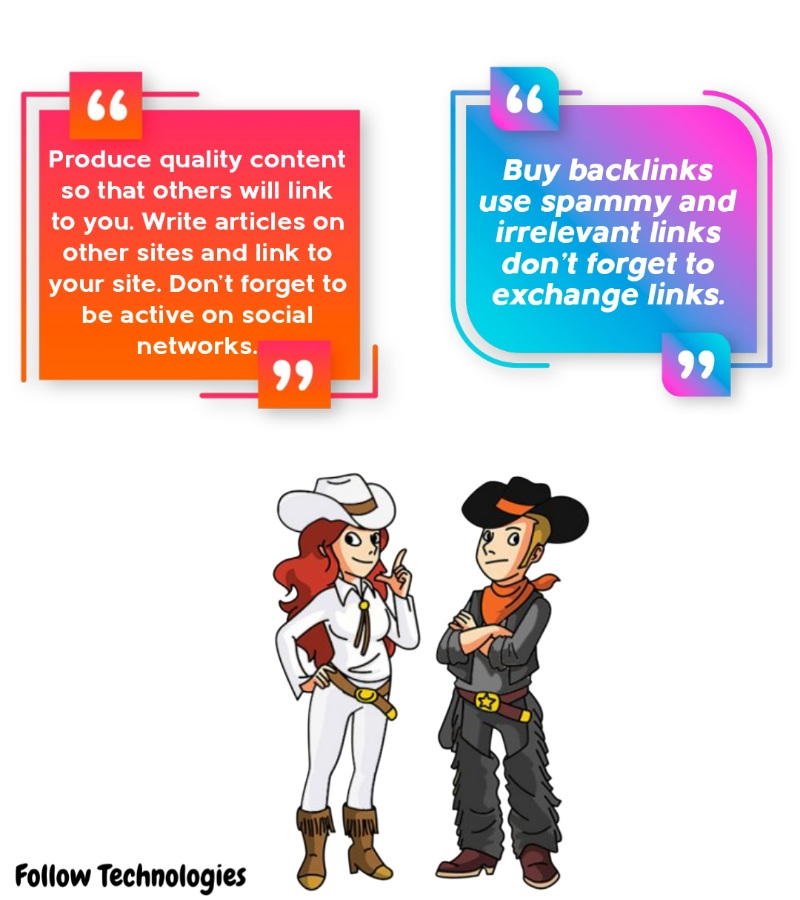
Introduction to Google search algorithms
Google’s search algorithms are a complex system that determines the order of search results. They are constantly updated to improve the quality of search results and combat spam and other black hat SEO practices. These algorithms also define the rules of SEO.
The main factors that Google’s algorithms consider when ranking websites are:
- Quality: How high-quality is the website content?
- Relevance: How relevant is the website to the search term?
- Up-to-date: How recently has the website content been updated?
- Expertise and credibility: How credible is the website and content writer in the search topic area?
- Trustworthiness: Is the website trustworthy? That is, does it publish accurate and specialized content?
Major algorithm updates and their impacts
Google releases major algorithm updates regularly. These updates can have a significant impact on website rankings. Some of the most notable algorithm updates include:
1. Panda Algorithm: This algorithm was released in 2011 to combat low-quality content. Websites with superficial or low-quality content saw their rankings drop, while high-quality, valuable content was rewarded and improved.
2. Penguin Algorithm: This update was released in 2012 to combat spam and other forms of content overload. Websites that engaged in these practices saw their rankings drop.
3. Hummingbird: This update was released in 2013 to improve Google’s understanding of search terms. This led to a better understanding of the purpose behind the search, or intent, and more relevant search results.
4. Focus on Mobile First Design: This update was released in 2019 to prioritize mobile-friendly websites in search results. This is because more people are using their mobile devices to search the web.
5. BERT: This update was released in 2019 to improve how Google understands natural language phrases. An update that resulted in more relevant search results for searches expressed in natural spoken language.
How do we stay resistant to algorithms?
There is no surefire way to maintain your ranking after an algorithm update, but there are a few things you can do to improve your chances:
- Create backlinks from other high-quality websites
- Stay informed about the details of Google algorithm updates.
- Produce quality content that is relevant to your target audience.
- Make sure your website design and coding are mobile-friendly.
- Use keywords throughout your content, but don’t overuse them. In other words, avoid keyword stuffing.
By following these tips, you can increase your chances of ranking high in search results, even when Google algorithms change.
SEO job and progression path
The SEO job or working as an SEO expert and manager has a simple basic definition. What is an SEO job? In short, an SEO expert is a professional who helps websites rank higher on the search engine results page (SERP). They do this by optimizing the content, structure, and technical elements of the website and using many other techniques for relevant keywords.
The responsibilities of an SEO specialist can vary depending on the size and complexity of the website but typically include the following:
- Fix any technical issues that could affect the website’s ranking.
- Monitor website performance in SERPs and make changes if needed
- Optimize website content for these keywords, including title tags, meta descriptions, and text.
- Improve website structure and navigation to make it easier for search engines to crawl and index.
- Conduct keyword research to identify the terms people use to search for your website’s products or services.
In addition to these technical skills, professionals must also have strong analytical and problem-solving skills to succeed in the SEO job market. They must be able to identify and fix problems that are affecting a website’s ranking and track and measure the results of their efforts.
How to become an SEO expert?
There are a few different ways to become an SEO expert. One way is to take online courses or workshops. There are also numerous certifications available on services like LinkedIn, Udemy, and Coursera that can help you showcase your skills to potential employers.
Once you have the necessary skills, you can look for a job as an SEO specialist. There are a variety of opportunities where you can find these jobs, including digital marketing agencies, web development companies, and in-house marketing teams. You can also start out as a freelancer for small businesses or grow your own business.
SEO Job Outlook and Job Market
The SEO job market is expected to grow in the coming years as online businesses increasingly recognize the importance of SEO in increasing their website traffic. As a result, there will always be a number of job opportunities for SEO professionals.
If you’re interested in working in SEO, there are a few things you can do to increase your chances of success. First, make sure you have the necessary skills and knowledge. Second, get as much experience as you can, whether through internships or small projects. Finally, network with other SEO professionals and stay up-to-date on trends in the field.
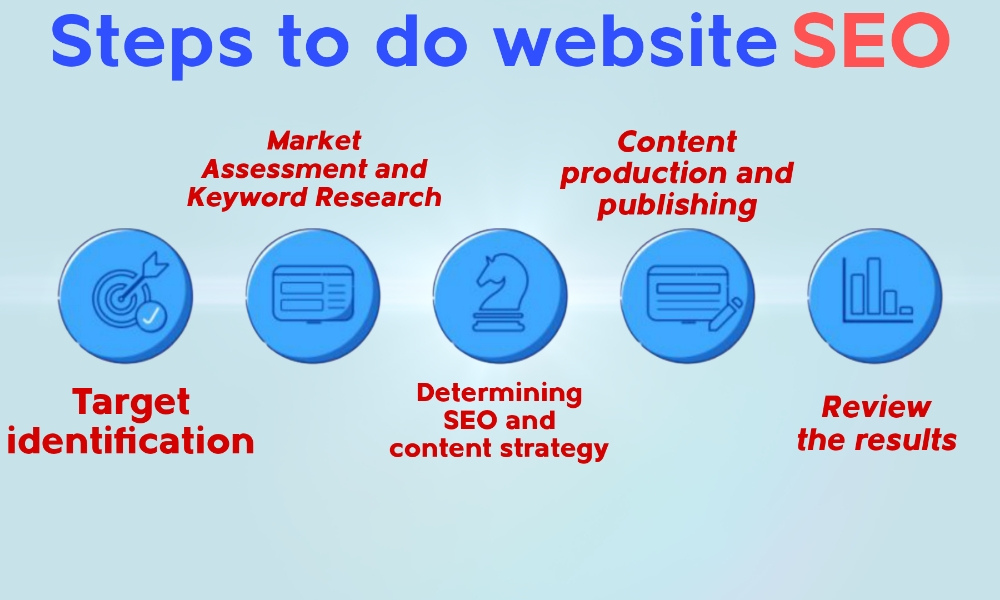
SEO Training; Tips and Resources
SEO in today’s world is a complex and ever-changing field and science, but there are a number of good resources to help you learn SEO. Below, we’ll explore some resources and paths to learning SEO.
Where to start learning SEO?
If you’re new to SEO, the best place to start is with the basics. There are plenty of free resources available online in the form of blog posts, articles, and videos. You can also find some good books on SEO. You need to practice the first step, which is doing the right research and finding reputable sources.
Once you have a basic understanding of SEO, you can start looking for more advanced resources. There are plenty of paid and free courses available online.
Books, courses, and online resources
Here are some books, courses, and online resources to learn SEO:
1. SEO book
- SEO for Beginners Moz
- Ahrefs Complete SEO Guide
- Search Engine Optimization by Eric Eng, Rand Fishkin, and Bill Slavsky
2. SEO training courses
- HubSpot SEO Fundamentals
- Ahrefs Complete SEO Course
- Neil Patel’s SEO Masterclass
Experience and learn from experienced experts
Another great way to learn SEO is to learn from experienced experts in the industry. There are a number of SEO experts who offer online courses, workshops, and consulting services. Of course, you need to do your research to find reputable courses. Like any other industry, low-quality courses will likely be published in SEO.
You can also learn from industry experts by attending SEO conferences and workshops.
The following tips are also suggested for better progress in learning SEO:
- Be patient. It takes time to learn SEO and see results.
- Don’t give up. SEO can be challenging, but it is definitely possible to learn and master.
- Stay up to date on the latest trends. SEO is constantly changing, so always stay up to date with the latest trends.
- Experiment with different techniques. There is no one-size-fits-all approach to SEO. The best way to learn, experiment, and analyze SEO is with different techniques.
Website SEO analysis
To improve your website’s SEO performance, you need to analyze its current state and identify important areas that need optimization.
There are many tools available to check your website’s SEO. Some of the most popular tools for checking your site’s status on Google include:
- Moz: This service offers a variety of SEO tools, including keyword research, SEO analysis, link building, and internal optimization.
- Ahrefs: This tool is similar to SEMrush, but it also offers a number of special features for tracking your website’s SEO performance and that of your competitors.
- SEMrush: This tool provides a comprehensive analysis of your website’s SEO, including keyword research, backlink analysis, and competitor analysis.
- Google Search Console: This tool provides information about how your website is performing in Google search, including impressions in search results, clicks, and page rankings.
Key Performance Indicators (KPIs) for SEO
There are a number of key performance indicators (KPIs) that you can use to track your website’s SEO performance. Some of the most important KPIs include:
- Click-through rate (CTR): This indicator determines the ratio of users clicking to viewing the website in search results.
- Search engine or organic traffic: The number of visitors who come to your website from search engines.
- Conversion rate: This is the percentage of users who take the desired action on your website, such as making a purchase or signing up for a newsletter.
- Ranking in search results: This indicator examines your website’s ranking for specific keywords in search results.
Interpret and act on SEO data.
Once you have collected data about your website’s SEO performance, you need to interpret it and act on it. That is, identify the areas and techniques that need to be optimized. To do this, it is best to first set realistic goals. Don’t expect to see results from your SEO efforts overnight. Improving your website’s ranking in search results takes time and patience.
Then, focus on the most important KPIs. It’s not easy to achieve optimal values for all KPIs. Focus on the KPIs that are important to your business goals. Also, track your progress over time to see what’s working and what’s not.
Finally, be patient and consistent. SEO is a marathon, not a sprint. Improving your website’s SEO performance takes time and effort.
YouTube SEO
YouTube is the second largest search engine in the world after Google, so by being active on it and optimizing your content for search, you will have a large potential audience. YouTube SEO can help you get more views for your videos, which will also help improve your site’s ranking.
Ways to improve YouTube SEO
YouTube’s algorithm is a complex system that considers various factors when ranking videos. These factors include title, description, tags, number of views, likes, dislikes, and watch time.
To optimize your videos, you should focus on the following:
1. Choose the right keywords: The first step is to choose the right keywords for your videos. Top keywords should be words and phrases that users are likely to search for when searching for information on topics related to your videos. You can use keyword research tools for this.
2. Use your keywords in the title, description, and tags: Your title, description, and tags are important for YouTube SEO. Make sure you use your keywords in these sections as much as possible, but do it naturally. That is, don’t overuse keywords.
3. Create engaging content: The most important factor in YouTube SEO is the quality of your content. If your videos are engaging and informative, users will watch and share them more, which will help you rank higher in search results.
4. Promote your videos: Once you’ve created great content, you need to promote it so that more users can see it. Share your videos on other social networks like Instagram, Twitter, and YouTube. Also, increase the chances of getting seen by sending out an email newsletter and featuring it on your website.
Video optimization techniques
In addition to the tips above, there are a few specific techniques you can use to optimize your YouTube videos. These techniques include:
1. Design a custom thumbnail: Your thumbnail is the first thing users see on the search page. Make sure it is engaging and relevant to your video content.
2. Add subtitles: Subtitles make your videos accessible to a wider audience, including the deaf and hard of hearing. More views also improve rankings.
3. Use End Pages and Cards: End pages and cards are interactive elements you can add to your videos. They can promote other videos, playlists, or channels.
4. Optimize your channel: Your channel title, description, and tags are also important for SEO. Make sure to use relevant keywords in these sections.
By following these tips, you can optimize your video content for YouTube SEO and get more views, subscribers, and engagement.
Future Trends in SEO
Search engine optimization (SEO) is constantly changing, and trends are emerging that will be important in the future. Here are some of the most important trends:
1. The increasing importance of mobile: Google has already announced that in the near future, it will be ranking websites more with a focus on mobile-friendly loading.
2. Voice Search: Voice search is very popular today, thanks to voice assistants. It is estimated that by 2025, half of all searches will be done by voice. Businesses should optimize their websites for voice search using keywords and phrases in natural human language.
3. Artificial Intelligence and Machine Learning: Search engines use artificial intelligence (AI) and machine learning to understand searchers’ intent better. As a result, businesses need to produce content that is relevant to the searcher’s intent (not just the keyword).
4. Personalization: Search engines are becoming more personalized than ever before, now showing different results to different users based on individual interests and preferences. In order to be seen by the right people, businesses need to produce content that is relevant to their target audience.
5. Local SEO: Local SEO is becoming increasingly important as more people use search engines to find local businesses. Businesses should optimize their websites for local search by including their address, phone number, and other relevant information.
By following these tips, businesses can prepare for the future of search and ensure that their website is visible in search results.
Conclusion
SEO and website optimization are some of the most important approaches to increasing online business sales today. Google SEO, which focuses on improving rankings in the Google search engine, is one of the most important types of SEO and, along with YouTube SEO, can have a great impact on increasing traffic.
